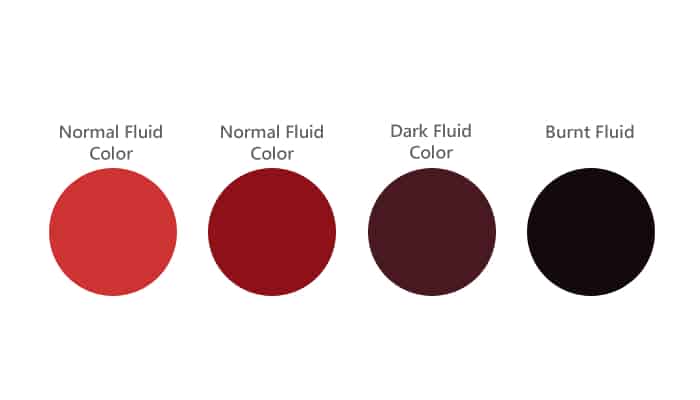Understanding Transmission Fluid for Your Honda CR-V
When it comes to maintaining your Honda CR-V, one of the most crucial aspects is ensuring that you use the correct transmission fluid. The right fluid not only keeps your transmission running smoothly but also extends its lifespan. So, let’s break down what you need to know about the transmission fluid specifications for your vehicle.
Manufacturer’s Recommendations
| Popular posts |
|---|
| What to do to prolong the life of your manual gearbox |
| Automatic transmission: what it is, how it works |
Honda has specific requirements for the transmission fluid used in the CR-V. For the 2019 model, the manufacturer recommends using Honda’s own CVT Fluid . This is not just a suggestion; it’s a requirement to ensure optimal performance and longevity of your vehicle’s continuously variable transmission (CVT).
Specifications
Here are the key specifications for the transmission fluid you should use:
- Type: Honda CVT Fluid
- Viscosity: The fluid is designed to operate effectively at a wide range of temperatures, ensuring smooth shifting and performance.
- Color: Typically, Honda CVT fluid is a clear or light amber color, which can help in identifying any potential leaks or contamination.
- Performance Additives: This fluid contains specific additives that enhance its performance, including anti-wear agents and friction modifiers, which are crucial for the unique design of CVTs.
Why Use the Recommended Fluid?
Using the recommended Honda CVT fluid is essential for several reasons:
- Compatibility: Honda’s CVT fluid is formulated specifically for the transmission in your CR-V. Using other types of fluid can lead to poor performance and even damage.
- Warranty Protection: If your vehicle is still under warranty, using non-recommended fluids can void your warranty. Stick with Honda’s recommendations to avoid any issues.
- Optimal Performance: The right fluid ensures that your transmission operates at peak efficiency, providing better fuel economy and smoother acceleration.
- Longevity: Using the correct transmission fluid can significantly extend the life of your transmission, saving you costly repairs down the line.
Where to Find the Right Fluid
You can purchase Honda CVT fluid at any authorized Honda dealership or reputable auto parts store. Always check the label to ensure that it meets Honda’s specifications. Avoid generic brands or fluids that do not explicitly state compatibility with Honda CVTs, as they may not provide the necessary protection and performance.
In summary, using the correct transmission fluid for your Honda CR-V is not just a matter of preference; it’s essential for the health and performance of your vehicle. Stick to Honda’s recommendations, and you’ll be well on your way to a smooth and reliable driving experience.
Recommended Oil Brands for Your Honda CR-V Transmission Fluid
When it comes to maintaining your 2019 Honda CR-V, choosing the right transmission fluid is crucial. While Honda recommends its own CVT fluid, many owners have shared their experiences and preferences regarding alternative brands that can also deliver reliable performance. Let’s dive into what the community has to say about recommended oil brands for your vehicle’s transmission fluid.
Honda Genuine CVT Fluid
First and foremost, the most recommended option among Honda CR-V owners is the Honda Genuine CVT Fluid . This fluid is specifically formulated for Honda’s CVT systems and is often praised for its performance. Here’s what owners have to say:
- Performance: Many users report smoother shifting and improved fuel efficiency when using Honda Genuine CVT Fluid.
- Longevity: Owners have noted that using this fluid can help extend the life of the transmission, reducing the likelihood of costly repairs.
- Warranty Compliance: Using Honda’s own fluid ensures that you remain compliant with warranty requirements, a crucial point for many owners.
Valvoline CVT Fluid
Another brand that frequently comes up in discussions is Valvoline CVT Fluid . Many owners have shared positive experiences with this alternative, especially when Honda Genuine fluid is not readily available. Here are some insights:
- Compatibility: Valvoline CVT Fluid is often cited as a compatible alternative that meets or exceeds Honda’s specifications.
- Cost-Effectiveness: Many users appreciate that Valvoline tends to be more affordable than Honda’s branded fluid, making it a popular choice for budget-conscious owners.
- Performance Feedback: Owners have reported satisfactory performance, with smooth shifting and no noticeable issues when switching from Honda’s fluid.
Castrol Transmax CVT Fluid
Castrol Transmax CVT Fluid is another option that has garnered attention among Honda CR-V owners. Here’s what the feedback looks like:
- Reputation: Castrol is a well-known brand in the automotive industry, and many owners trust its products for various applications.
- Performance: Users have reported that Castrol Transmax provides smooth operation and effective protection for their CVT systems.
- Availability: This fluid is widely available at auto parts stores, making it an accessible option for many owners.
Royal Purple CVT Fluid
For those looking for a high-performance option, Royal Purple CVT Fluid has received positive reviews from some Honda CR-V enthusiasts. Here’s the scoop:
- High-Performance Additives: Royal Purple is known for its premium formulations, which include advanced additives designed to enhance performance and protection.
- Owner Feedback: Some users report noticeable improvements in acceleration and overall drivability when using Royal Purple.
- Price Point: While it is on the higher end of the price spectrum, many owners believe the benefits justify the cost.
Owner Experiences and Considerations
When it comes to choosing the right transmission fluid, owner feedback is invaluable. Here are some common themes from various forums and discussions:
- Stick to Recommendations: Many experienced owners emphasize sticking to Honda’s recommendations whenever possible to avoid issues.
- Monitor Performance: If you switch to an alternative brand, keep an eye on how your transmission performs. Any unusual noises or shifting issues should prompt a reevaluation of your fluid choice.
- Community Insights: Engaging with fellow Honda CR-V owners on forums can provide insights into what works best for your specific driving conditions and habits.
In summary, while Honda Genuine CVT Fluid is the gold standard, several alternative brands have proven effective based on owner experiences. Whether you choose Valvoline, Castrol, Royal Purple, or stick with Honda’s own fluid, the key is to ensure compatibility and monitor your vehicle’s performance closely.
Change Interval for Honda CR-V Transmission Fluid
Maintaining the right change interval for your Honda CR-V’s transmission fluid is essential for ensuring the longevity and performance of your vehicle. The recommended change interval can vary based on driving conditions and habits, but understanding the general guidelines can help you stay on track.
Recommended Change Interval
For the 2019 Honda CR-V, the manufacturer generally recommends changing the CVT fluid every 60,000 miles (approximately 96,560 kilometers) under normal driving conditions. However, if you frequently drive in severe conditions—such as heavy traffic, extreme temperatures, or towing—you may need to change the fluid more frequently.
Driving Conditions Affecting Change Intervals
Consider the following driving conditions that may necessitate more frequent fluid changes:
- Severe Weather: Extreme heat or cold can affect fluid performance and longevity.
- Towing or Carrying Heavy Loads: This puts additional strain on the transmission, leading to faster fluid degradation.
- Frequent Stop-and-Go Traffic: This type of driving can cause the transmission to work harder, increasing wear on the fluid.
Partial Transmission Oil Changes
When it comes to changing your transmission fluid, many owners may wonder about the feasibility and effectiveness of partial changes. In most cases, a complete fluid change requires removing the transmission from the vehicle, which is not always practical. Here’s what you need to know about partial transmission oil changes.
What is a Partial Change?
A partial transmission fluid change involves draining a portion of the old fluid and replacing it with new fluid without removing the entire transmission. This method can be more convenient and cost-effective for many owners.
Benefits of Partial Changes
Here are some reasons why partial changes can be beneficial:
- Cost-Effective: Partial changes are generally less expensive than full fluid exchanges, making them more accessible for regular maintenance.
- Less Downtime: You can perform a partial change more quickly, reducing the time your vehicle is out of commission.
- Improved Fluid Quality: Regular partial changes can help maintain better overall fluid quality, especially if done at recommended intervals.
Statistical Data and Authoritative Sources
According to various automotive maintenance studies and manufacturer guidelines, regular fluid changes—whether partial or full—are crucial for the health of your transmission. The Automotive Research Center indicates that neglecting to change transmission fluid can lead to a significant decrease in performance and an increase in repair costs.
A study published in the Journal of Automotive Engineering found that vehicles with regularly maintained transmission fluid showed a 30% longer lifespan compared to those that did not adhere to maintenance schedules. This data underscores the importance of not only changing the fluid but also considering the method of change that best suits your situation.
In summary, while the recommended change interval for your Honda CR-V’s transmission fluid is generally around 60,000 miles, understanding the benefits of partial changes can help you maintain your vehicle effectively without the need for extensive repairs or downtime.
What Color Should Transmission Fluid Be?


